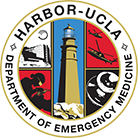We need you! Join our contributor community and become a WikEM editor through our open and transparent promotion process.
ACLS (Treatable Conditions)
From WikEM
| Condition | Common clinical settings | Corrective actions |
| Acidosis | Preexisting acidosis, DM, diarrhea, drugs and toxins, prolonged resuscitation, renal disease, shock | Reassess adequacy of oxygenation, and ventilation; reconfirm endotracheal-tube placement |
| Hyperventilate | ||
| Consider intravenous bicarbonate if pH <7.20 after above actions have been taken | ||
| Cardiac tamponade | Hemorrhagic diathesis, cancer, pericarditis, trauma, after cardiac surgery or MI | Give fluids; obtain bedside echocardiogram |
| Perform pericardiocentesis. Immediate surgical intervention is appropriate if pericardiocentesis is unhelpful but cardiac tamponade is known or highly suspected. | ||
| Hypothermia | Alcohol abuse, burns, CNS disease, debilitated or elderly patient, drowning, drugs and toxins, endocrine disease, history of exposure, homelessness, extensive skin disease, spinal cord disease, trauma | If severe (temperature <30°C), limit initial shocks for V-Fib or pulseless V-Tach to three; initiate active internal rewarming and cardiopulmonary support. Hold further resuscitation medications or shocks until core temperature is >30°C. |
| If moderate (temperature 30-34°C), proceed with resuscitation (space medications at intervals greater than usual), actively rewarm truncal body areas | ||
| Hypovolemia, hemorrhage, anemia | Major burns, DM, GI losses, hemorrhage, hemorrhagic diathesis, cancer, pregnancy, shock, trauma | Give fluids |
| Transfuse pRBCs if hemorrhage or profound anemia is present | ||
| Thoracotomy is appropriate when patient has cardiac arrest from penetrating trauma and a cardiac rhythm and the duration of cardiopulmonary resuscitation before thoracotomy is <10 min | ||
| Hypoxia | Consider in all patients with cardiac arrest | Reassess technical quality of cardiopulmonary resuscitation, oxygenation, and ventilation; reconfirm ETT placement |
| Hypomagnesemia | Alcohol abuse, burns, DKA, severe diarrhea, diuretics, drugs (eg, cisplatin, cyclosporine, pentamidine) | Give 1-2 g magnesium sulfate intravenously over 2 min |
| Myocardial infarction | Consider in all patients with cardiac arrest, especially those with a history of coronary artery disease or prearrest acute coronary syndrome | Consider definitive care (eg, thrombolytic therapy, cardiac catheterization or coronary artery reperfusion, circulatory assist device, emergency cardiopulmonary bypass) |
| Poisoning | Alcohol abuse, bizarre or puzzling behavioral or metabolic presentation, classic toxicologic syndrome, occupational or industrial exposure, and psychiatric disease | Consult toxicologist for emergency advice on resuscitation and definitive care, including appropriate antidote |
| Prolonged resuscitation efforts may be appropriate; immediate cardiopulmonary bypass should be considered, if available | ||
| Hyperkalemia | Metabolic acidosis, excessive administration of potassium, drugs and toxins, vigorous exercise, hemolysis, renal disease, rhabdomyolysis, tumor lysis syndrome, and clinically significant tissue injury | If hyperkalemia is identified or strongly suspected, treat with all of the following: 10 percent calcium chloride (5-10 mL by slow intravenous push; do not use if hyperkalemia is secondary to digitalis poisoning), glucose and insulin (50 mL of 50 percent dextrose in water and 10 units of regular insulin intravenously), sodium bicarbonate (50 mmoL intravenously; most effective if concomitant metabolic acidosis is present), and albuterol (15-20mg nebulized or 0.5mg by intravenous infusion) |
| Hypokalemia | Alcohol abuse, diabetes, use of diuretics, drugs and toxins, profound gastroinstestinal losses, hypomagnesemia | If profond hypokalemia (<2-2.5 mmoL of potassium per liter) is accompanied by cardiac arrest, initiate urgent intravenous replacement (2 mmoL/min intravenously for 10-15 mmoL), then reassess |
| Pulmonary embolism | Hospitalized patient, recent surgical procedure, peripartum, known risk factors for venous thromboembolism, history of venous thromboembolism, or prearrest presentation consistent with diagnosis of acute pulmonary embolism | Administer fluids; augment with vasopressors as necessary |
| Confirm diagnosis, if possible; consider immediate cardiopulmonary bypass to maintain patient's viability | ||
| Consider definitive care (eg, thrombolytic therapy, embolectomy by interventional radiology or surgery) | ||
| Tension pneumothorax | Placement of central catheter, mechanical ventilation, pulmonary disease (including asthma, chronic obstructive pulmonary disease, and necrotizing pneumonia), thoracentesis, and trauma | Needle decompression, followed by chest-tube insertion |
See Also
Authors
Jordan Swartz, Ross Donaldson, Neil Young, Daniel Ostermayer
